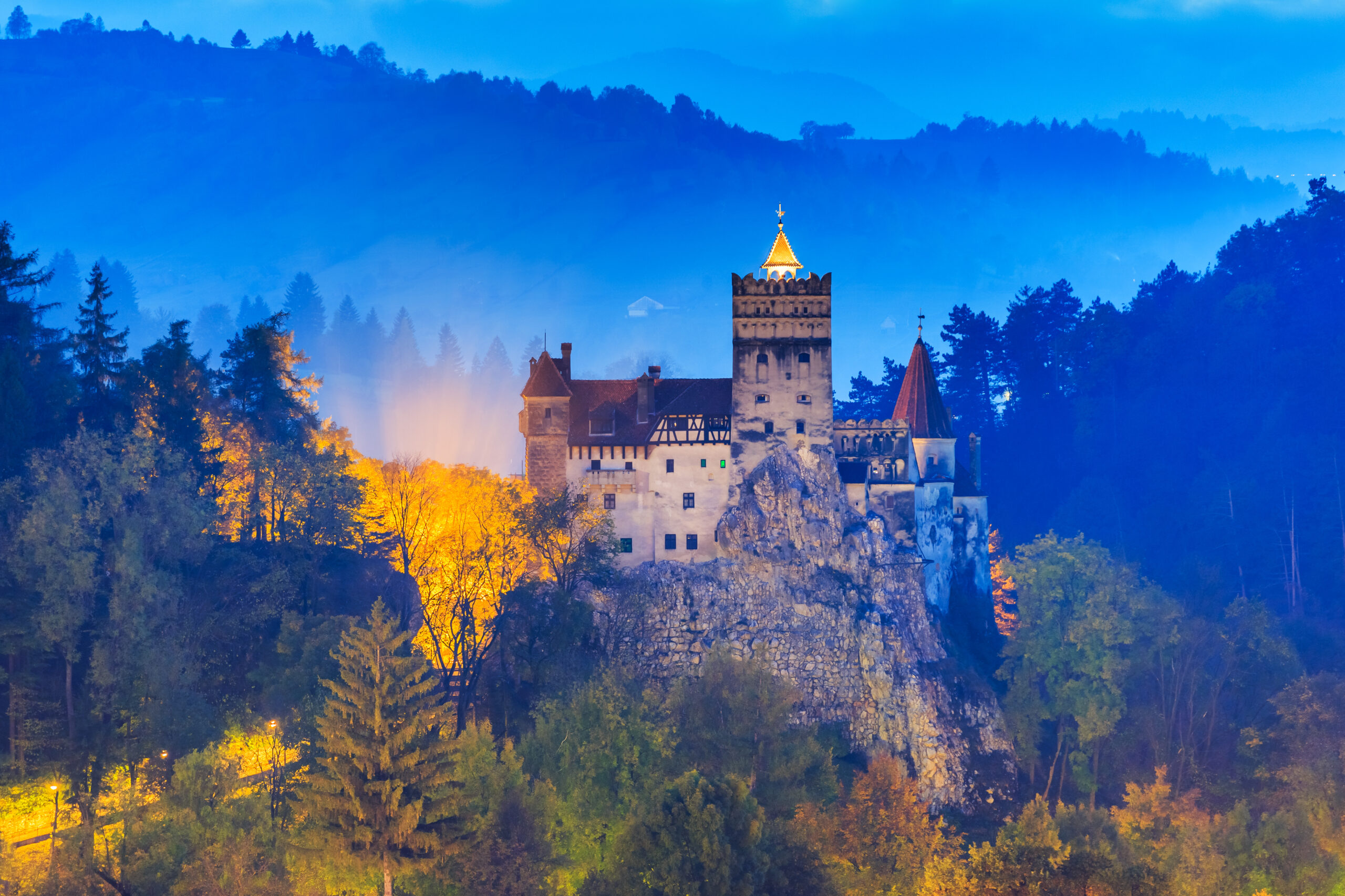Have you ever heard of Transylvania in Romania? If so, then you probably know it as the setting for gruesome Dracula and vampire stories. In fact, Transylvania has much more to offer than the legends surrounding Vlad Tepes and the bloodthirsty Count Dracula.
The region in the heart of Romania, which makes up around a third of the country’s surface area, surprises with untouched nature, magnificent castles and charming medieval towns.
The landscape is characterized by dense forests, the rugged mountain peaks of the Carpathians and lush pastures. Due to its unspoiled nature, Transylvania in Romania is home to numerous wild animals such as bears, wolves and lynxes.
Most of the people here live a simple life in harmony with nature and still maintain centuries-old customs and traditions. In the fields, you will see horse-drawn carts instead of modern tractors and much of the work is still done by hand.
Sometimes time seems to stand still in this idyllic region, a delightful contrast to our fast-paced society and the mass tourism that has taken over many places around the world in recent years.
It is no wonder that Transylvania attracts nature-loving and peace-seeking travelers who appreciate the originality and authenticity of this region.
Apuseni Nature Park
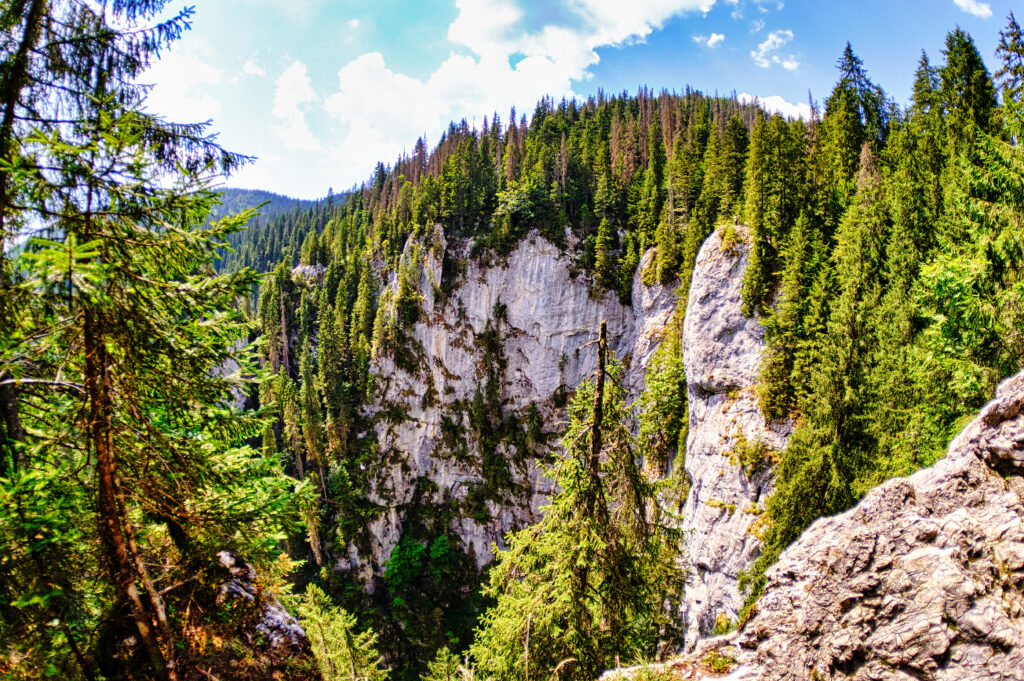
The Apuseni Mountains are better known as the “Western Carpathians” – some also call it “The Land of the Green Mountains”. And anyone who visits here feels transported back in time: The friendly people live in villages like those that may have existed in Central Europe well over a hundred years ago. Nature seems almost untouched.
A nature park covering over 75,000 hectares has been established: The Apuseni Nature Park. In addition to a rich variety of flora and fauna, special protection is given to the approximately 1500 caves in the mountains. The caves of the Apuseni National Park still hold many secrets. The mountains have been a mining area for gold prospectors for 4000 years – first the Dracians, then the Romans and later the Habsburgs.
Panning for gold is also one of the possibilities offered to active vacationers in the Apuseni. From farm vacations to cave explorations and various trekking tours: when it comes to experiencing nature and active vacations, there is little in Europe that can rival the Apuseni Nature Park.
The entire region of the Apuseni Mountains is sparsely populated, the small villages are separated by meadows and forests. No manager from a major tourism organization has ever come here, the whole area is completely undeveloped for tourism, a pearl of naturalness and originality. Hikers who stop off in the villages will experience the hospitality of the region.
Brasov
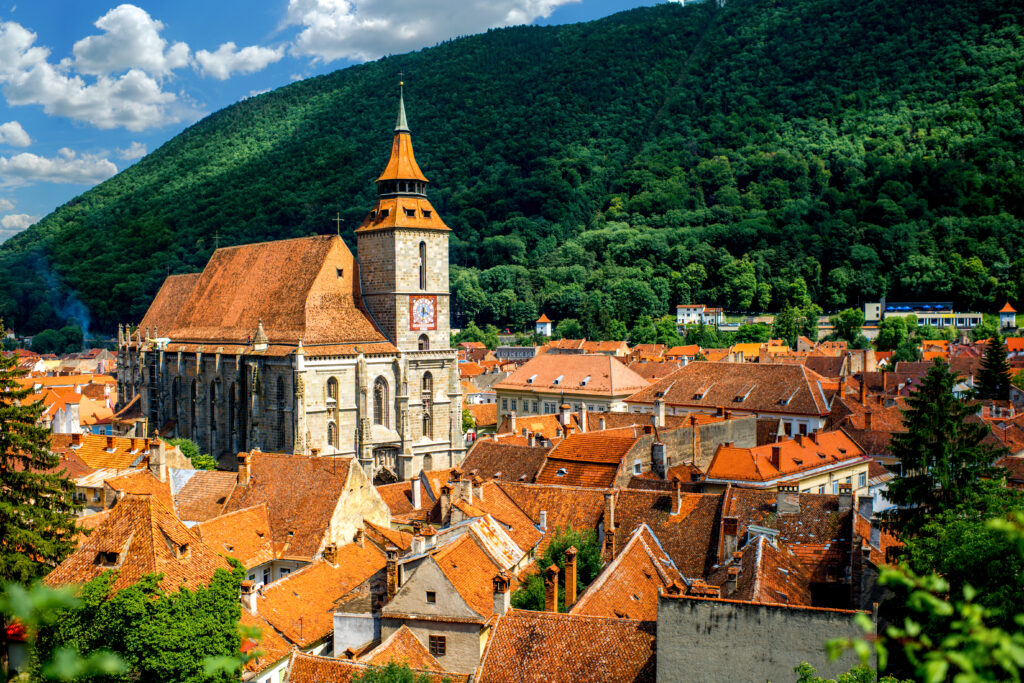
The city is the perfect place to spend a carefree vacation. Castles full of history, museums where you can acquire culture and new knowledge, ski slopes in winter and mountain hikes in summer. You can also enjoy a stroll through the old town, where you will find many stores and restaurants. Everyone who visits this city will experience unforgettable moments.
Brasov is the county capital of the county of the same name and consists of the towns of Brasov and Poiana Brasov. With its 253,200 inhabitants, it is one of the largest cities in the country. Poiana Brasov is only 12 km from the city center and has a well-developed infrastructure for winter sports.
Brasov was first mentioned in a document in 1234, in the “Ninivensis Catalog”. The existence of this catalog dates back to the Stone and Bronze Ages. It documents many places such as the ancient settlements discovered in the Melcilor-Sprenghi region. The city was already 700 years ago an important connection point between Moldavia, Transylvania and Wallachia, because it is located between the great passes of the Carpathians.
Kronstadt is not only one of the most important economic, cultural and sporting centers of the country, but also an important tourist center and a city of monuments, such as the Black Church, the medieval city fortifications, the statue of John Honterus, the Town Hall, the Andrei Saguna High School and many others.
Sinaia
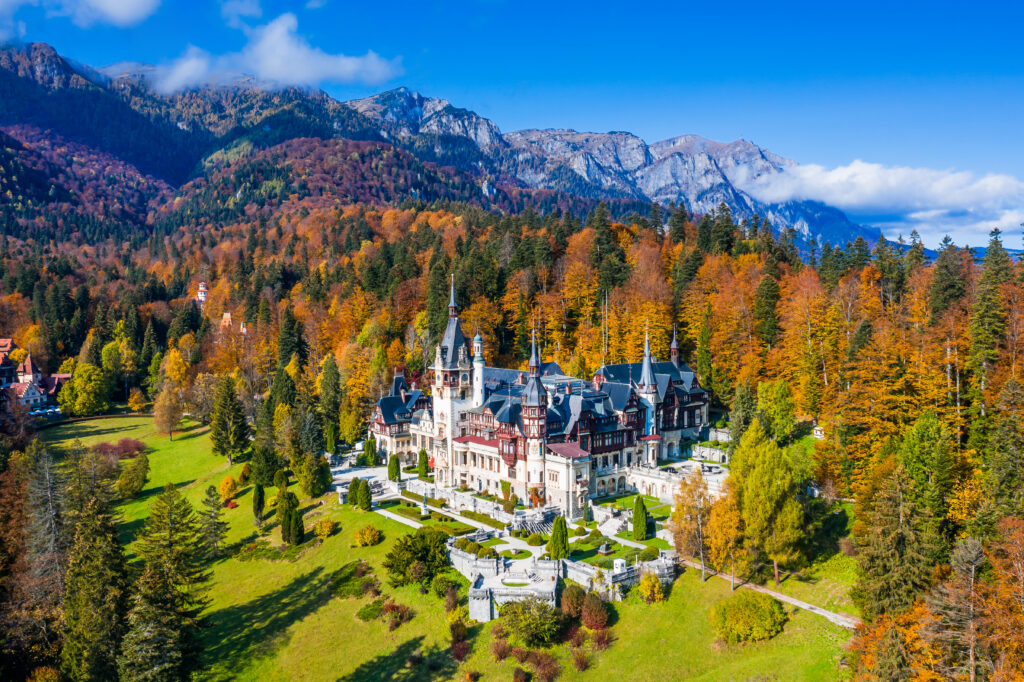
The former royal castle of Peles is located very close to the city of Sinaia. The imposing building is reminiscent of a fairytale castle and inside you can admire impressive paintings, sculptures and nostalgic furniture in the museum.
You will encounter many attractions on your round trip through Transylvania. Numerous exhibitions are held in the beautiful Peles Castle, bringing you closer to the history of Romania.
Peles Castle dates back to the 19th century and is surrounded by seven terraces. It also houses a theater and was once the summer residence of King Karol I. Enjoy a glimpse into the Turkish salon, or take a guided tour to explore the 160 rooms. And after many exciting hours, you can take a trip into the beautiful natural surroundings.
The Sinaia Monastery is located at around 800 meters above sea level in the midst of the magnificent backdrop of the Bucegi Mountains.
It dates back to the end of the 17th century. At that time, General Mihai Cantacuzino was so fascinated by the monastery of “St. Helena” on the Egyptian peninsula of Sinai that he had a similar building constructed in his native Transylvania.This is where the name of the monastery comes from.
In the Sinaia Monastery, the bell tower from 1892 is particularly impressive. Inside the tower is the 1,700 kg bell, which was brought from Bucharest.The church in the monastery was the first public building in Romania to be lit by electricity.Many tourists also visit the Sinaia Monastery because it houses a historically significant museum from the 19th century.
Cluj-Napoca
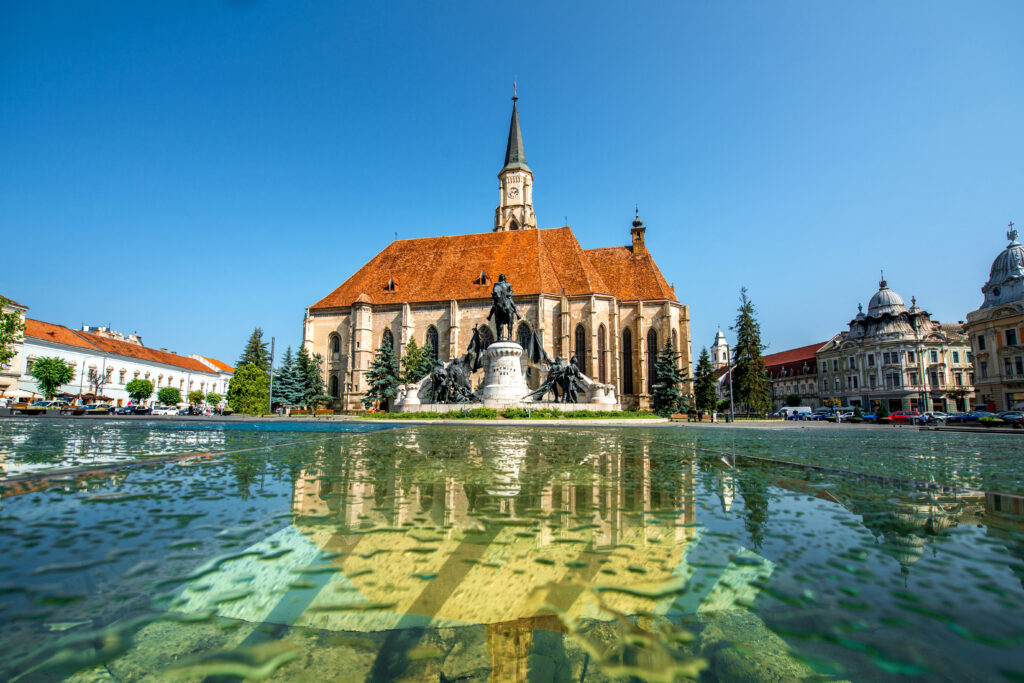
Cluj-Napoca, often simply referred to as Cluj, is located in Transylvania and is the capital of the county of the same name. Cluj now has around 400,000 inhabitants and is the largest city in Romania after Bucharest. It has always had cultural and religious significance and has held an administrative position. The character of a student city is clearly noticeable.
Cluj is an interesting place for young people. With six state and various private universities, Cluj is a lively city with a varied and exciting nightlife during term time. There are even Viennese-style coffee houses. The city’s vibrancy is also reflected in its cultural offerings and there are regularly interesting festivals nearby.
If you are interested in culture, you will get your money’s worth in Cluj anyway.
Various theaters, operas, cinemas and museums are waiting to be discovered.And last but not least, what makes the city of Cluj so special is the age of many cultural institutions and its culturally diverse character.
The Babeș-Bolyai University can look back on a history dating back to 1581, there has been a Hungarian-language theater since 1792 and, last but not least, the largely preserved old town invites you to marvel.
In addition to various houses, churches and other buildings built between the 13th and 20th centuries, the statue of the equestrian statue in Cluj’s city center also bears witness to the importance of arts and crafts
Sibiu
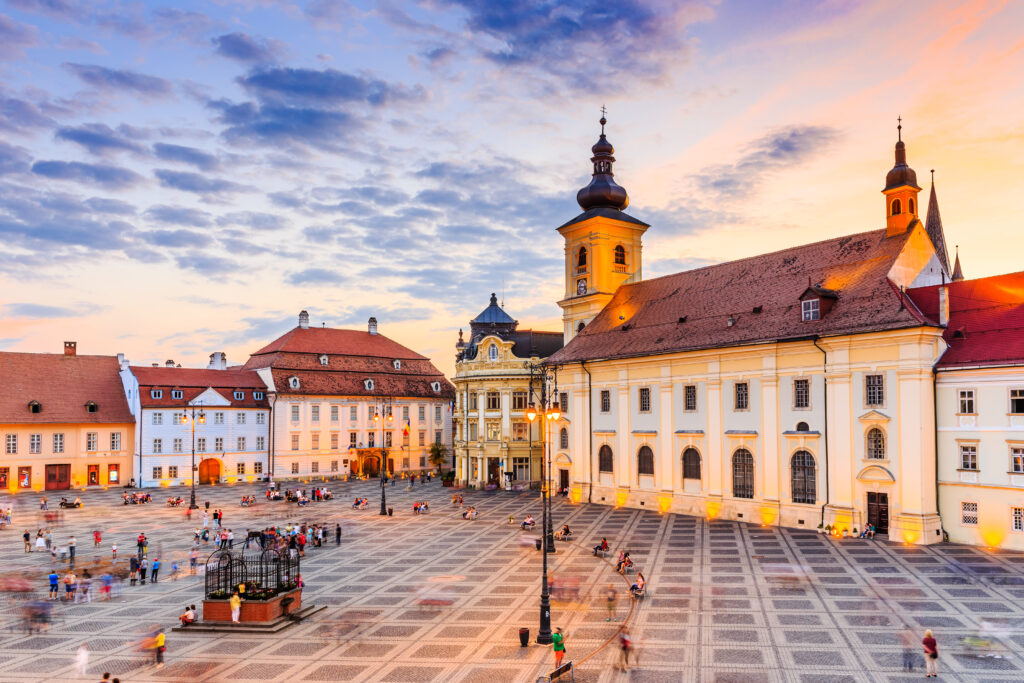
Anyone strolling through the streets of Sibiu today will find a number of bilingual name signs. This is because the first German settlers probably arrived in the beautiful city on the hill above the Zibin River in 1147.
The city quickly developed into one of Romania’s trading centers. Sibiu is a city that delights with a true variety of cultural offerings.
In earlier times, the upper and lower town were protected by three rings of walls with 39 towers and many large gates, some of which still exist.
Despite repeated sieges, the Turks never succeeded in overcoming the city’s three rings of walls. Only one Hungarian prince of Transylvania, Gabriel Báthory, managed to occupy and plunder Sibiu by trickery.
Today, the historic center of the upper town of Sibiu with its beautiful picturesque squares has been lovingly restored.
The largest square is the “Great Ring”, which is surrounded by magnificent buildings such as the Blue Town Hall and the baroque-style Brukenthal Palace. The Brukenthal Palace is the most representative building in Sibiu.The construction of the palace was severely limited by the size of the plots on which it was to be built, yet it is one of the most beautiful palaces in Transylvania.
The Bridge of Lies, a cast-iron beauty in Sibiu, is not only one of the city’s landmarks, but there are also many legends surrounding the bridge, which was built in 1859. According to one legend, the bridge begins to shake if someone tells a lie while crossing it.since the Middle Ages.
Astra Museum
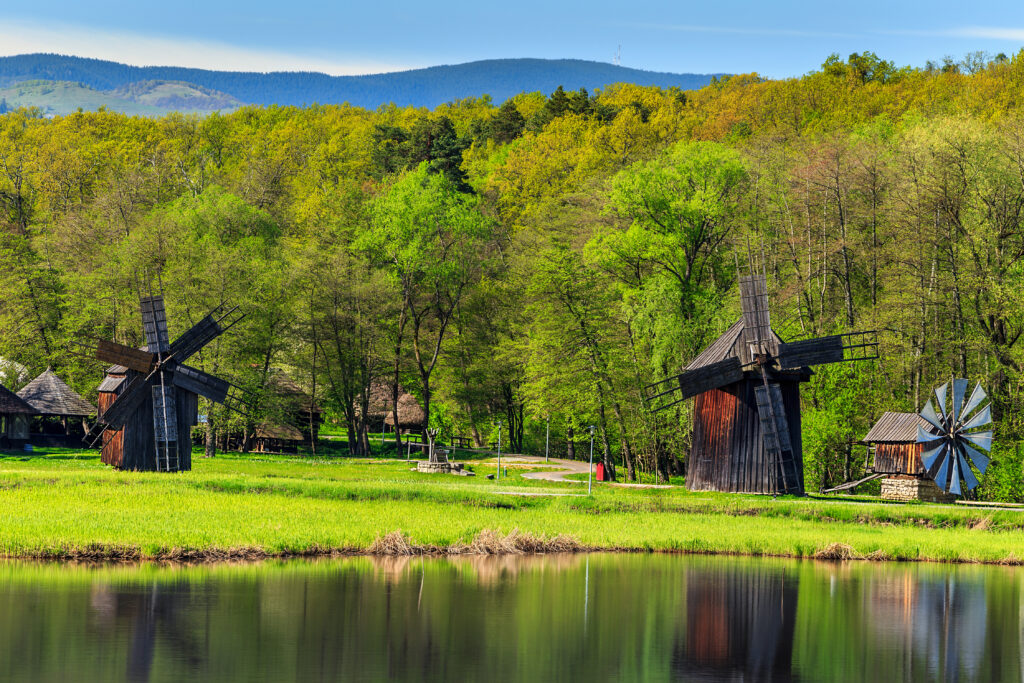
The Astra National Museum Complex is a collection of several museums, founded in 1905 and considered the most important ethnomuseum institution in Romania. Restructured in 1990, it now comprises four museum units and other departments, including documentary film and restoration. Part of this complex is the Astra Open-Air Museum, commonly known as the Astra Museum.
The open-air museum is located within a nature reserve and covers an area of 96 hectares. This open-air area was established in 1963 as a museum of rural technology. Over the decades, old farmsteads and buildings from various parts of Romania have been brought together and rebuilt here.
The collection is also constantly being expanded, as you can see; there are buildings that are still under construction and cannot yet be viewed because craftsmen are working on them. Today you can admire over 400 monuments, many of which can be visited, some of which are currently being rebuilt or renovated and can only be viewed from the outside.
There is a collection of mills, two impressive wooden churches where services are still held and many traditional farms.
Depending on the region from which the buildings originate, they have been reconstructed as part of the nature reserve, e.g. a fishing ensemble from the Danube delta on the banks of a lake or mountain huts a little higher up in the forest. In addition to the buildings, the museum offers events and workshops, craft demonstrations and, of course, catering and a playground.
Corvin Castle
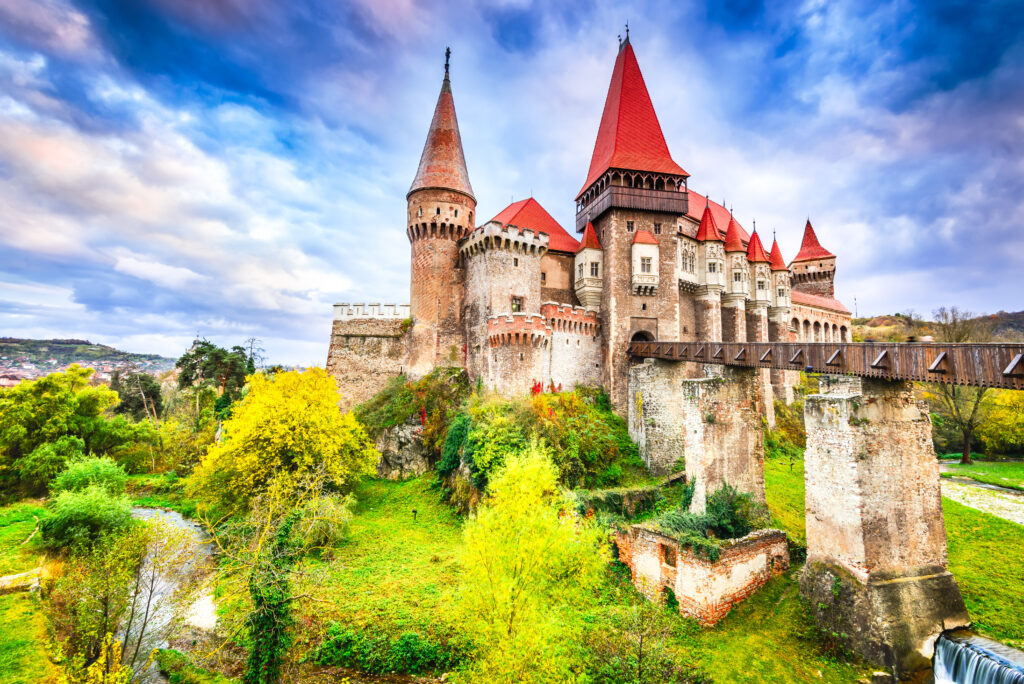
Corvin Castle, one of the most magnificent castles in Europe, where Dracula, alias Vlad Tepes, was imprisoned. The castle is a landmark of Gothic architecture and has been the setting for numerous films.
The castle was built in 1440 by Johann Hunyadi on the site of an old fortification. In the second construction phase after 1458, the castle was extended under King Matthias Corvinus. At the beginning of the 17th century, Prince Gábor Bethlen carried out further major alterations to the building. Today’s castle is a mixture of different architectural styles.
The castle stands to the west of the old town of Hunedoara on a rock with an area of around 7,000 square meters. The building is enclosed by the Zlasti River on the west and south sides. A large moat surrounds the castle on the east and south sides. Parts of the surrounding wall around the so-called “Hussar Court”, which was built some distance from the castle bridge, are still preserved.
The castle is also famous for its ghosts. Even an old painting shows a ghost, and the castle is now a hotspot for ghost hunters. In the torture exhibition, however, which is right next to the castle, a cold shiver ran down my spine. People can be cruel. So decide for yourself whether you want to see it.
Transfagarasan Highway
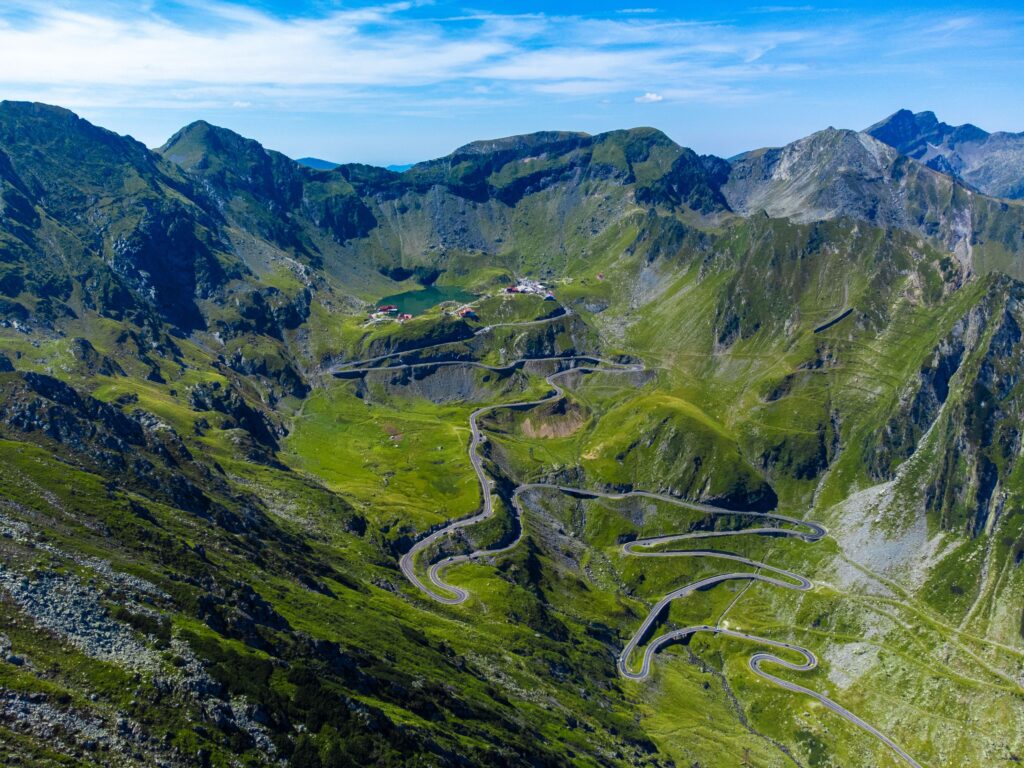
A hidden gem in the impressive Carpathian Mountains of Romania is the Transfogaras High Road. This spectacular road, also known as the DN7C, has become one of the most impressive driving routes in the world and attracts visitors from all over the world year after year.
With its impressive architecture, breathtaking landscapes and historical significance, the High Road is a must for adventure seekers and nature lovers.
The Transfogaras High Road stretches over a length of 90 kilometers and winds through the Fagaras Mountains, known as “the Alps of Romania”. The road was built between 1970 and 1974 and was an ambitious project of the then Romanian dictator Nicolae Ceaușescu.
It was originally designed as a military route and served to open up the strategically important area and provide a quick connection between northern and southern Transylvania in the event of an attack.
What makes the Transfogarasch High Road so unique is the breathtaking landscape through which it passes. During the drive, visitors are treated to breathtaking views of the Carpathian Mountains, steep gorges, wild rivers and beautiful mountain lakes.
One of the most famous lakes along the route is Lake Balea, which often freezes into a fairytale ice landscape in winter. In summer, visitors can take the cable car to the summit of Mount Fagaras and enjoy the breathtaking panoramic view of the surrounding landscape.
Sighusiara
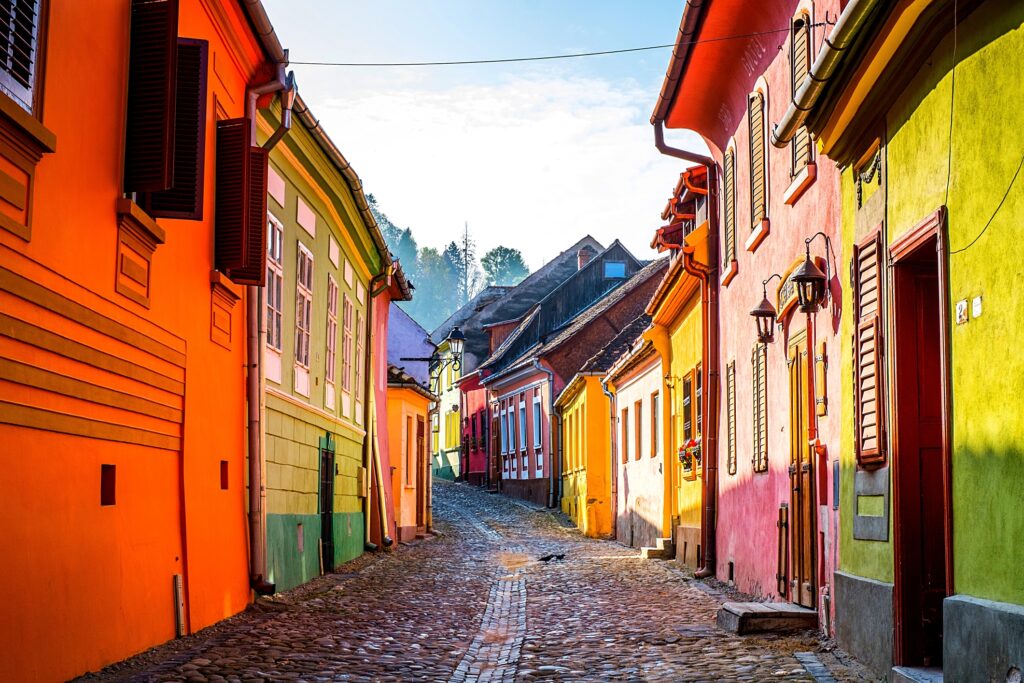
Sighisoara is located in the heart of Transylvania. Situated on a mountain ridge, the old town rises above the roofs of the newer lower town. Anyone entering the upper town through one of the city gates immediately senses that the Middle Ages are still alive here.
This was also the view of UNESCO, which declared the “castle”, as the old town is still known, a World Heritage Site in 1999. It is believed that Vlad III Drăculea, who inspired Bram Stoker’s character Dracula, was born here.
In the 12th century, some Transylvanian Saxons founded Sighisoara. Over the centuries, the small town developed into an important trading center. Numerous guilds came together here.
The most striking landmark of Sighisoara’s old town is the imposing clock tower with its colorful tiled roof and strikingly shaped towers. Next to the tower clock, there is a unique play of figures.
The figures symbolize the times of day and thanks to them, the townspeople could still tell the time from the surrounding fields. This was important as the city gates closed from 6 pm to 6 am. It was impossible to get through during this time.
The massive town wall is partially well preserved. Each of its towers was built by members of the various guilds. Each one has its own individual style.
The presumed birthplace of Dracula, which now houses a medieval restaurant.
Salina Turda
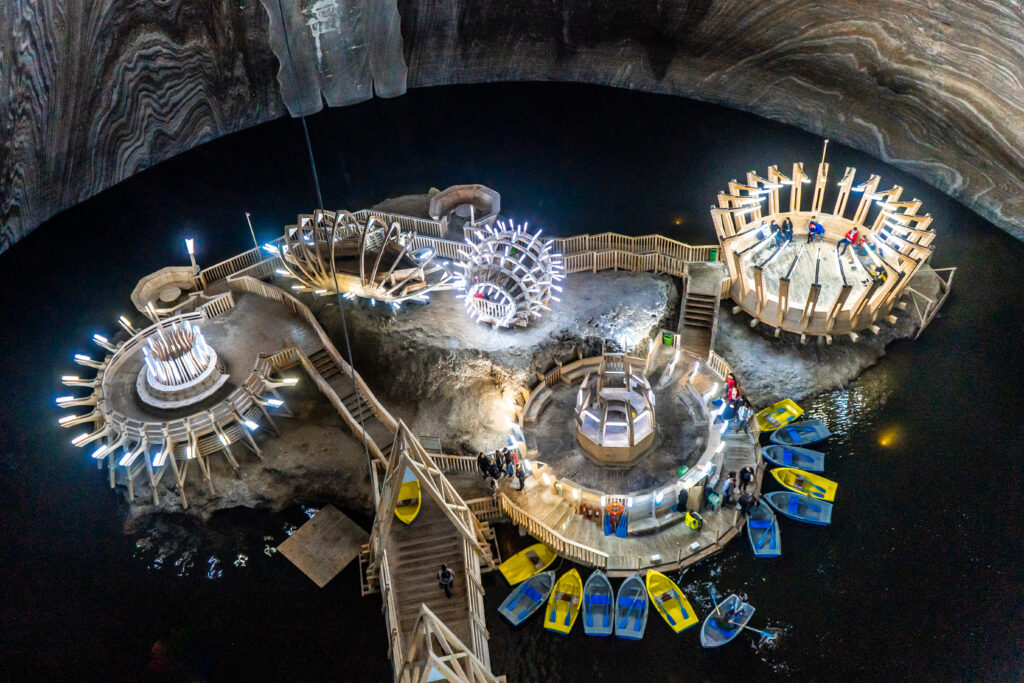
The disused salt mine “Salina Turda” is located in Romania, near the town of Turda of the same name. Built in Roman times, the former salt mines have been transformed into a show mine, museum, spa and attraction site. Visitors are offered an “underground” experience.
Visitors begin their journey with the Franz-Josef-Galerie, which displays exhibits of the salt mining technology of the time. A restaurant and hotel are also attached. The bottom of the mine can be reached either by elevator or new stairways. If visitors choose the catacombs, they can immediately see the effects of the salty air. On old salt balconies, the banisters, corridors and stalactites are completely covered in salt.
The first salt mining began at ceiling height and continued downwards. On the more than 12-13 balconies, there are year numbers that provide information about the depth level reached in each case. After these floors and railroads with iron carts, the attraction finally appears. A wooden facility was built on a stone island on the salt lake.
There, small paddle boats offer the opportunity to take a closer look at the large stone walls with salt inclusions and creative lighting shows the way to the island as well as the other attractions of the place. In addition to a Ferris wheel, sports fields and a concert hall, there are also various lounge areas.
Gorge of Varghis
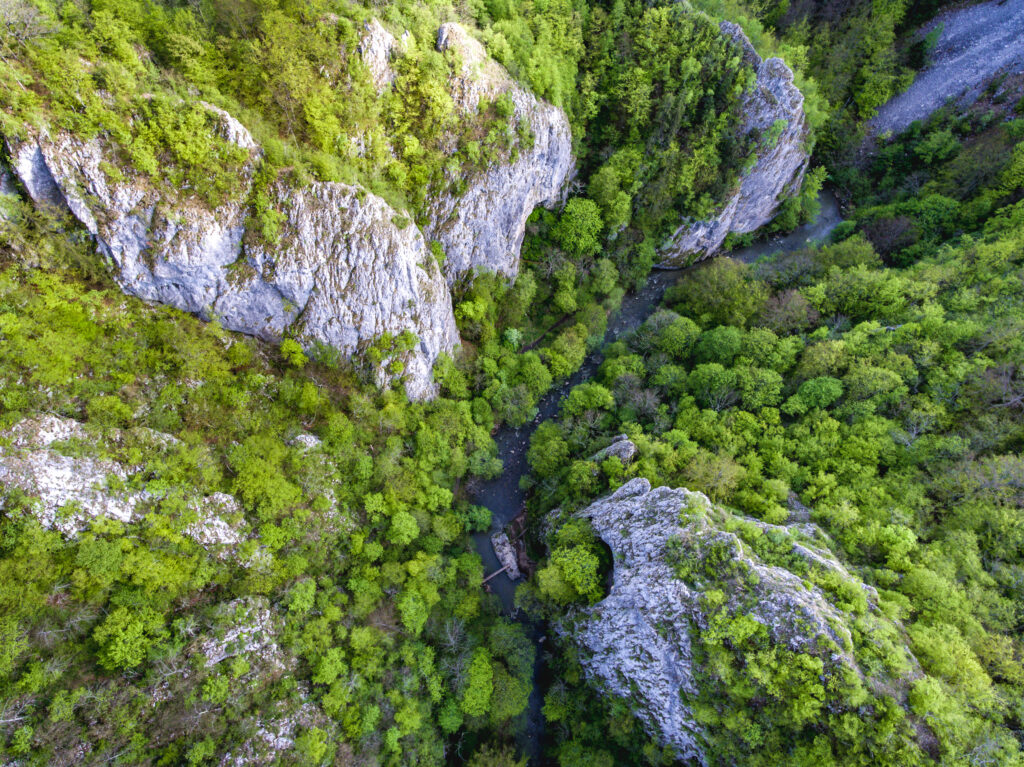
They are among the most beautiful natural sights in Romania and can be explored on your own or on a guided tour. In addition to the flora and fauna in the gorges, the 122 caves are also fascinating. They are home to bats, which underpins the myth of Dracula.
Guided excursions provide lots of information, while private trips can be planned at your own pace. Excluding excursions into the caves, an exploration covers around nine kilometers and can be completed in under three hours.
Bran Castle
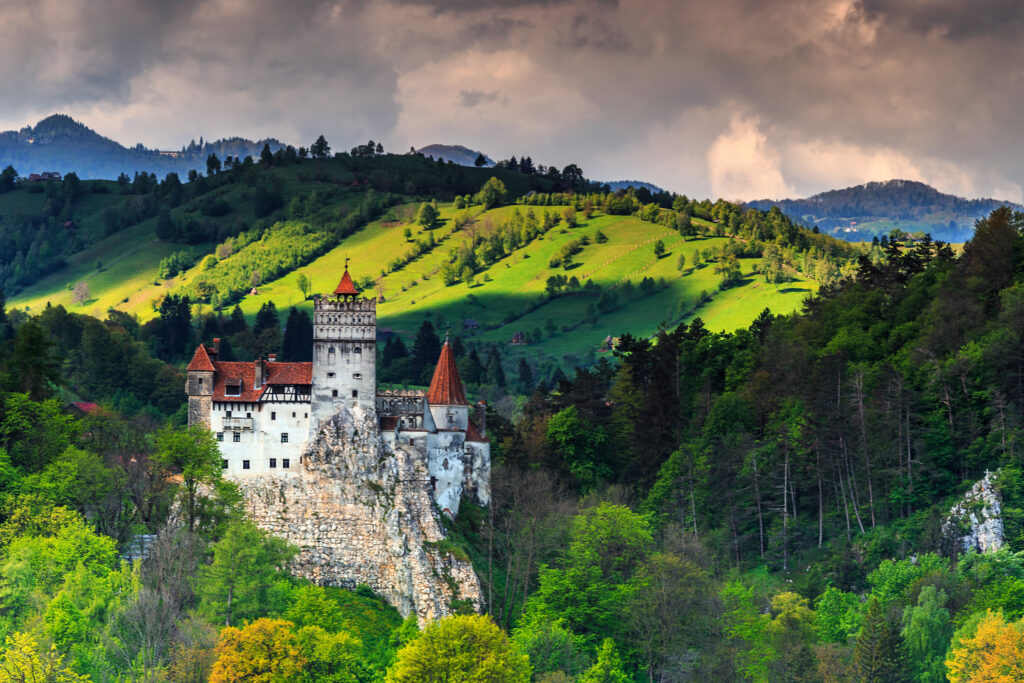
Numerous myths surround the castle in Transylvania, in the heart of Romania. Made famous by Bram Stoker’s novel “Dracula”, this mystical place has always cast a spell over people.
The castle is located around 30 kilometers from Brasov and was built in 1377. The castle has experienced numerous military conflicts and was first besieged by the Turkish army in 1436, followed by an attack by the Wallachians in 1529.
The third siege was again by a Turkish army in 1789. The castle withstood all its enemies. It was only taken by Romanian soldiers in 1916. Since the Second World War, the castle has been a tourist attraction whose fascination continues unabated to this day.
In 1897, a building was mentioned in Bram Stoker’s novel “Dracula”, which corresponds to Bran Castle in terms of its location and appearance. The historical model for Count Dracula, Vlad Tepes, Prince of Wallachia, very probably never stayed in the building. Nevertheless, the legend is still alive.
Bear reserve in the Stramba Valley
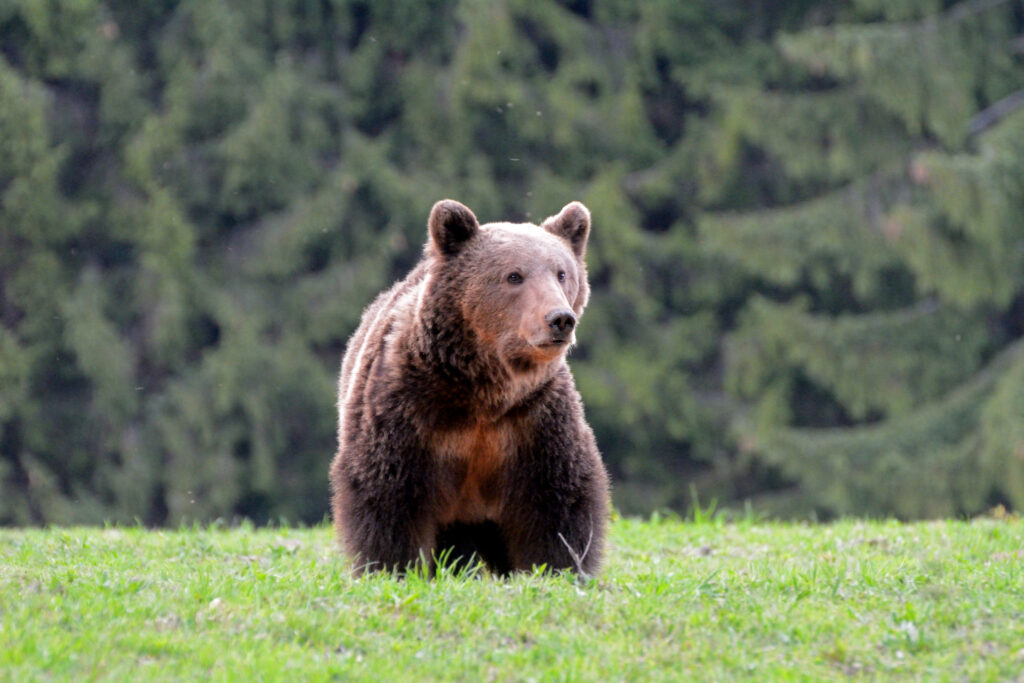
Romania also has a lot in store for nature lovers. As an outdoor fan, you can visit one of the many national parks here. You can also go hiking in the high mountains of the Carpathians. And if you’re an animal lover, you’ll get your money’s worth with sightings of wolves or brown bears.
Wildlife spotting is very popular in Transylvania. Unfortunately, the knowledge that many brown bears still live in Transylvania today has a disadvantage. The furry animals are also hunted. In the bear reserve in the Stramba Valley, all bears that were once kept in captivity or in unworthy conditions are taken in.
Here the brown bears can finally let off steam in an area of 70 hectares of oak forest. They can now live in peace in the bear sanctuary. There are currently 70 bears in the reserve, some of which you can observe undisturbed.
7 Ladders Gorge
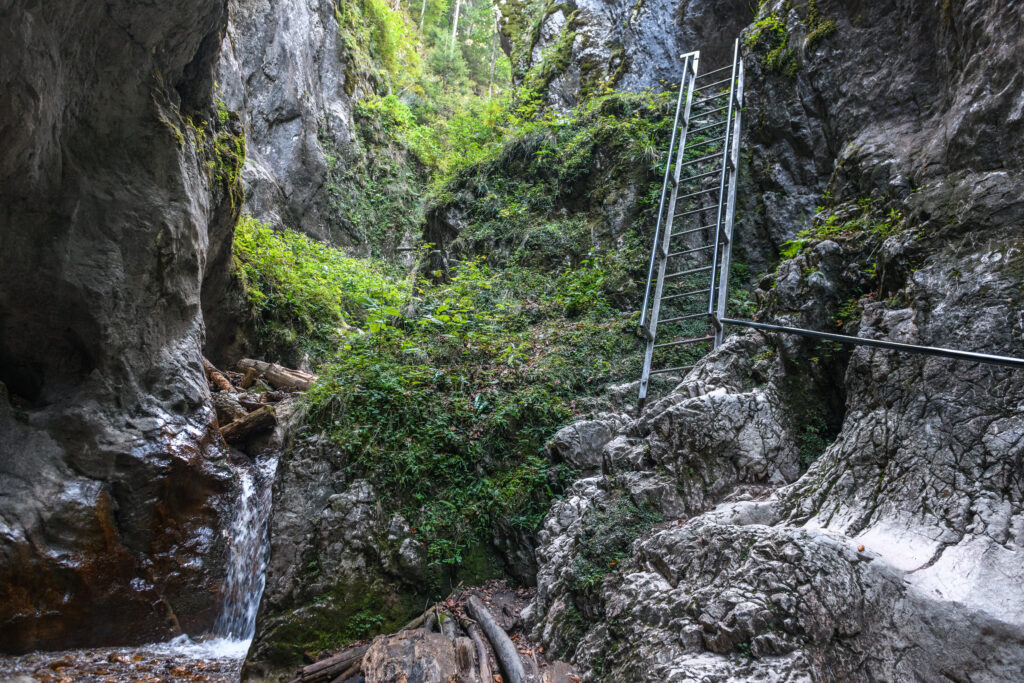
The Sapte Scari (Seven Ladders) gorge is not far from Brasov.
The approximately one-hour walk to the gorge is characterized by breathtaking nature. Beautiful streams and wooded areas as well as colorful butterflies adorn the very natural path. In some places you even have to cross logs to get across dry over small stakes. It is advisable to wear waterproof clothing.
Once you arrive at the gorge, you pay a small fee and then have to wait in a queue for a while, depending on the number of visitors.
Access to the gorge begins with a ladder about 4 meters high, through which you can enter the gorge. The walls and the stream that meanders through the gorge are a truly breathtaking sight. Immediately afterwards, there is a smaller ladder and a larger one right next to a small waterfall.As already mentioned, you should wear clothes that can get wet.After this section, the trail becomes much more relaxed.
Of course, you have to walk over hill and dale and a short section along a mountain path, but even these parts are decorated by waterfalls and the surrounding beautiful nature.
However, you can definitely plan more than an hour for the way back. After visiting the gorge for around 25 minutes, you start the return walk through a wooded area. This hike offers the perfect day trip for people looking for a very natural experience in the surroundings of Brasov.
Piatra Craiului National Park
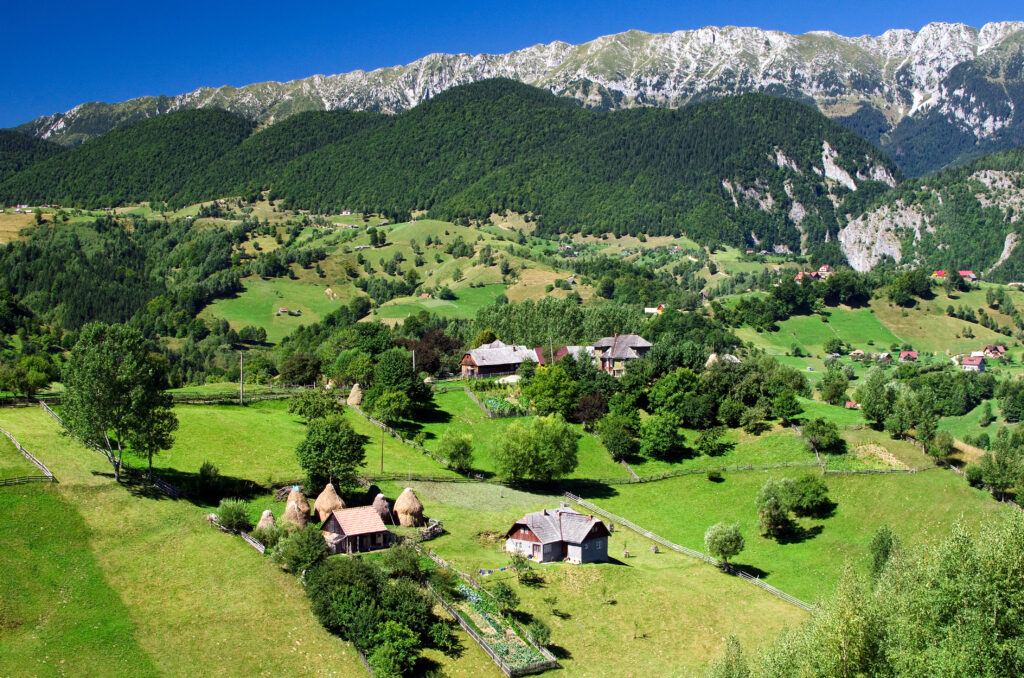
The Piatra Craiului National Park is a protected area in the Piatra Craiului Mountains, in the Southern Carpathians. The national park extends over Brașov and Argeș counties, covering an area of 14,800 hectares. It has a karst landscape with spectacular limestone formations and is home to a rich variety of flora and fauna.
The wildlife of the national park is represented by a wide variety of mammals, birds, fish, amphibians and reptiles, some of which are on the red list of endangered species. With a bit of luck, you may come across and observe wild boar, foxes, owls or deer on a hike here during the day.
But the flora and the general surroundings of the national park are also worth mentioning. You will see breathtakingly beautiful mountain meadows and forests, rivers, waterfalls and valleys as well as spectacular rock formations. There are numerous designated hiking and cycling trails to choose from, as well as restaurants and places to picnic and rest in nature.
Important information: Please note that an “encounter” with a wild animal can be very dangerous (especially bears, as two thirds of Europe’s bear population live in Romania). Never try to attract these animals (not even from a car on the side of the road) and only hike in the forests with experienced tour guides or on designated paths.
Calimani National Park
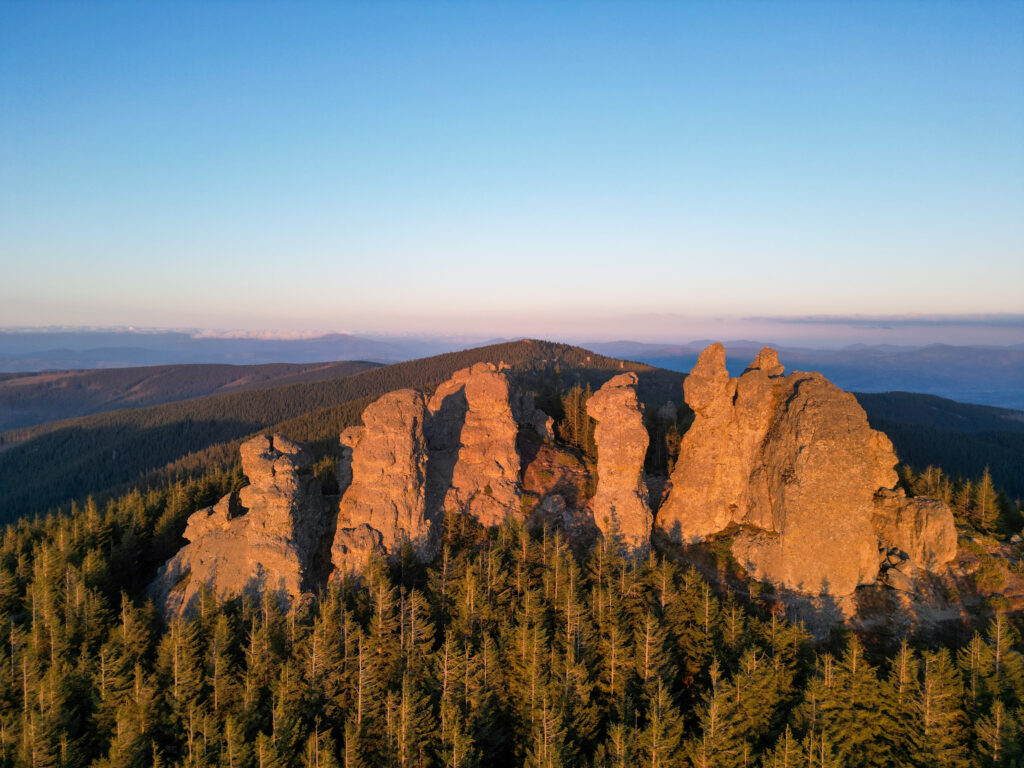
Calimani National Park is located in the north-east of Romania and is a nature reserve that you should see. You can explore the beautiful nature here on numerous hiking trails.
The nature park is part of the Eastern Carpathians and is located around 160 kilometers from the cities of Suceava, Targu Mures or Cluj-Napoca. There are smaller nature reserves within the national park. There are also a number of hiking trails that take you through forests, mountains and valleys.
The highest point in the Calimani National Park is Pietrosul Calimani, which is over 2000 meters high and offers you a wonderful view. You should also have seen the Lezer mountain lake and the 12 Apostles rock formations. The sulphur mining area, on the other hand, was not created by nature. You can find information about hiking trails on the nature park’s website, for example. Also take care of your equipment.
There are various hiking trails of different lengths and levels of difficulty in the Calimani National Park. But even if you just want to take a day trip to the national park, you will be amazed by the fantastic nature. One of the most beautiful trails takes you over a mountain ridge to the summit of Varful Pietrosul (2100m).
Timisoara
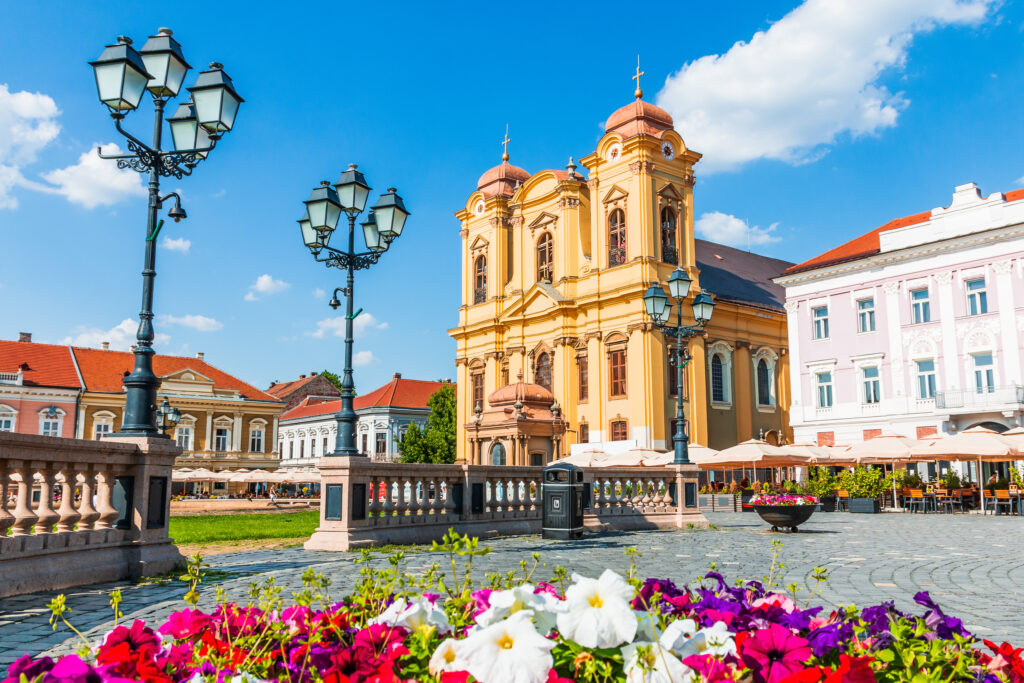
Timișoara is located in the west of Romania and is the third largest city in the country. The capital of Timis County is often referred to as the cultural center of Banat.
With over 15,000 old buildings, the cityscape of Timisoara is strongly reminiscent of Austria’s capital and is often referred to as the “little Vienna” – not least because the city was part of the Austro-Hungarian monarchy for a long time. Timisoara became known worldwide in 1989, when the Romanian revolution against the dictator Nicolae Ceausescu began right here. Since then, the city’s name has been a symbol of freedom.
The spirit of freedom, together with the multiculturalism that is just as typical of the city, can be seen in Timisoara’s many squares. The oldest square in the city is Piata Unirii. Surrounded by churches and palaces, the cathedral square is particularly busy in the summer months and at weekends. Piata Victorei is the city’s showpiece square with its wide boulevard, which is considered the city’s promenade.
In addition to the impressive buildings, Timisoara also has a lot to offer in terms of cuisine. For example, the many pastry shops with delicious Romanian delicacies are notorious – everything from crémes, sheet cakes and tarts can be found here. The locals are also very proud of their beer, which has been brewed in the city’s Timisireana brewery since 1718.
Timișoara was not chosen as the European Capital of Culture 2021 for nothing!
Targu Mures
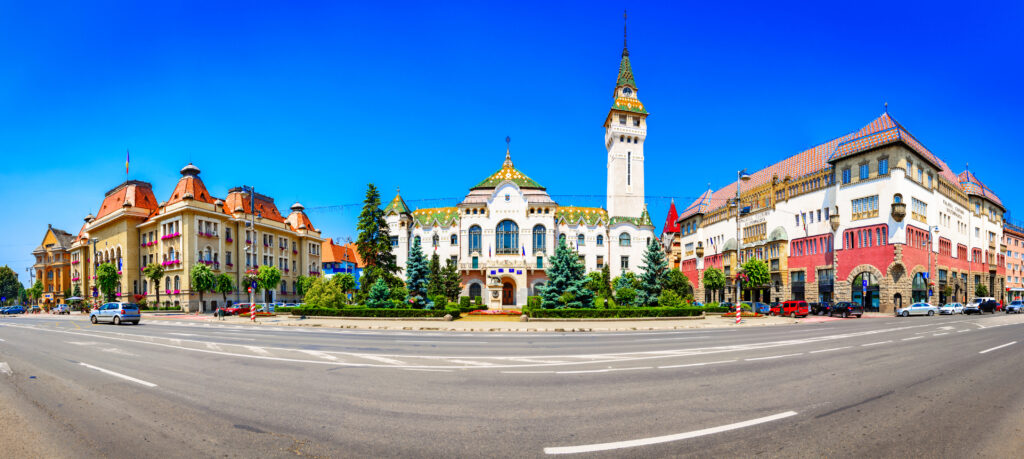
Târgu Mureş is a town in the central-northern part of Romania, in Transylvania, and has a medieval flair thanks to its buildings.
Situated on the Mureş River, the town has created a place for recreation for its inhabitants with the construction of the “Weekend” leisure center. There are several pools and a basin for boat trips.
The city also offers several sights such as the Palace of Culture, the medieval fortress or the Market of Roses in the city center, where you can find a number of beautifully decorated medieval buildings. The city also has a zoo, which is home to more than 500 animals on an area of 20 hectares, making it the second largest zoo in Romania.
Rasnov Fortress
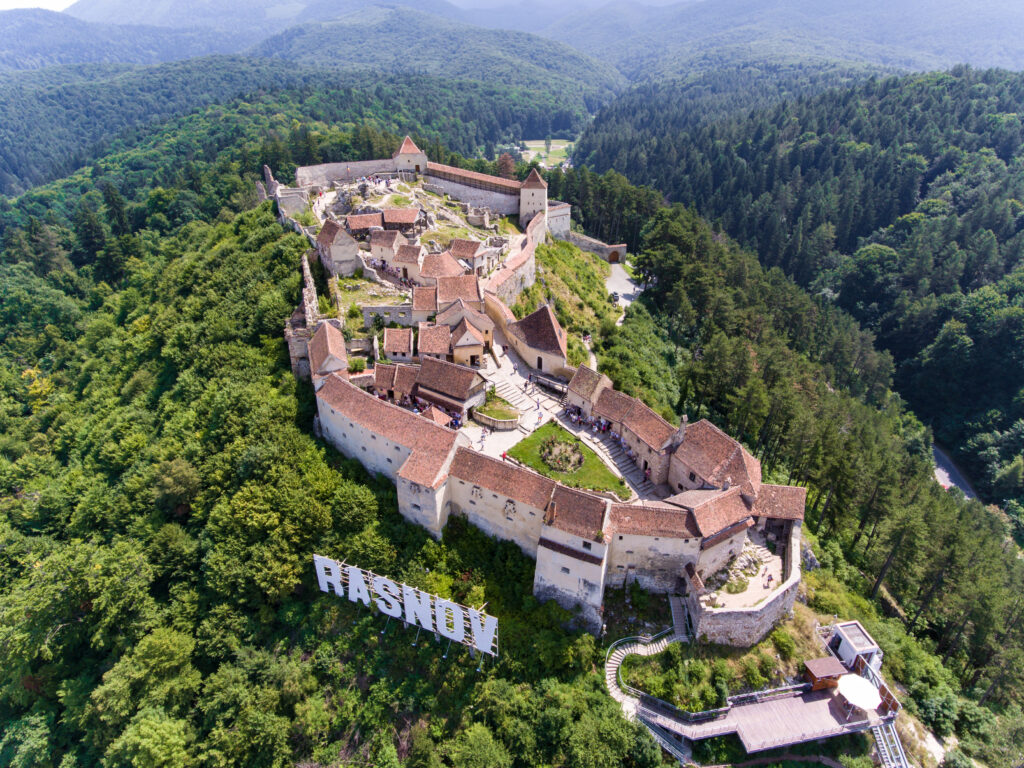
Just 15 km from Brasov is Râșnov Castle, one of the best fortified castles in Transylvania. It has a strategic location, as it was used for military purposes; it is surrounded by forest and is situated on the top of a cliff. Access is via a serpentine road and takes about 15 minutes on foot.
There is an outer and an inner courtyard on the approximately 3500 m² area, with the outer one offering a magnificent view of the city of Râșnov, a city that is often mentioned in various testimonies throughout history.
The fascinating thing about this place is that a treasure was discovered in the outer courtyard that was hidden for more than 400 years, a treasure consisting of knives, buckles, arrowheads, 416 silver coins minted between 1509 and 1610, and much more.
The sights of the fortress include the interior of the fortress and the Museum of Feudal Art, where various objects such as weapons, historical furniture and even a torture mask can be seen. Tourists can buy souvenirs and sit on the terrace of the fortress. Last but not least, the fortress was the location for the filming of the movie Cold Mountain starring Nicole Kidman and Jude Law.
Fortified Churches
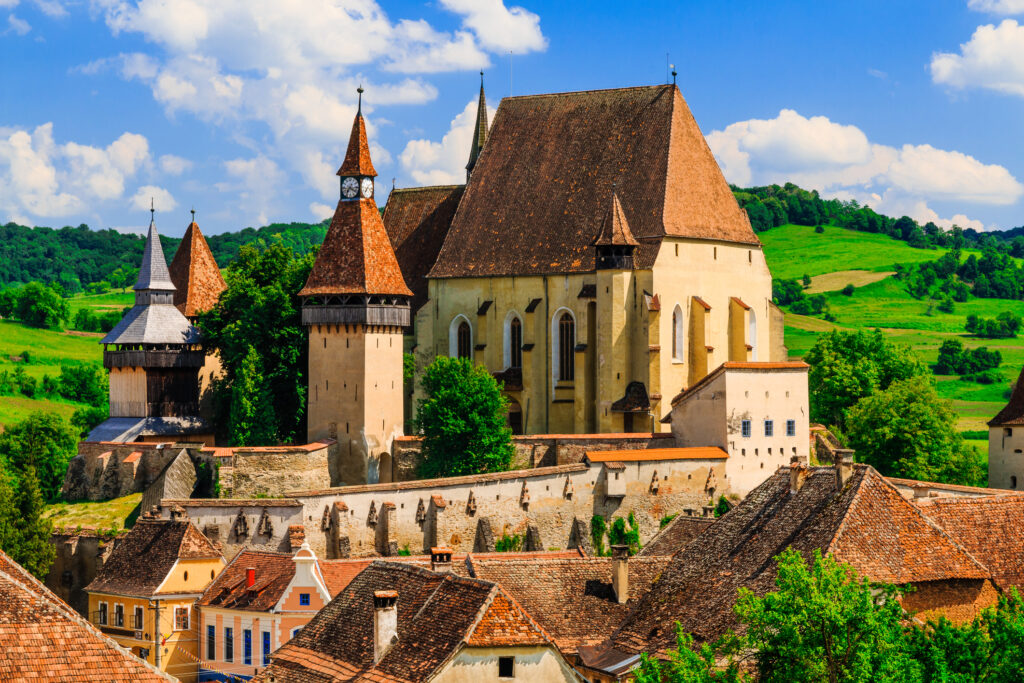
The culturally and historically outstanding Transylvanian fortified churches stand on the hilltops and look out over the rolling countryside. Over 160 of them are still preserved, a density of fortified churches that is unique in the world.
The fortified churches used to be the last chance of salvation and survival. The Hungarian King Geysa II (1141 – 1161) brought the new settlers into the country in order to protect the borders of his empire with a human barrier against the constant invasions of the Mongols and Tartars. Later, the Ottomans invaded, plundering the land. Their destination was Vienna, but they used Transylvania to forcibly replenish their provisions, enslave women and children for profit and steal precious treasures.
In return, the Transylvanian Saxons built fortified churches as their practical and spiritual refuge. A strong fortress is our God.
Precious goods could be stored here and provisions could be laid in for difficult times. Walls were built around the churches against the grueling experience of marauding hordes, supply buildings were erected and often a bacon tower was also raised. Eventually, massive military fortifications with two or three rings of walls, battlements, embrasures and lounges were built so that the village community could retreat into the system of their neighborhoods.
A special treasure in many churches are the organs from different eras. They resemble resounding pearls in a masonry shell.
Retezat Mountains
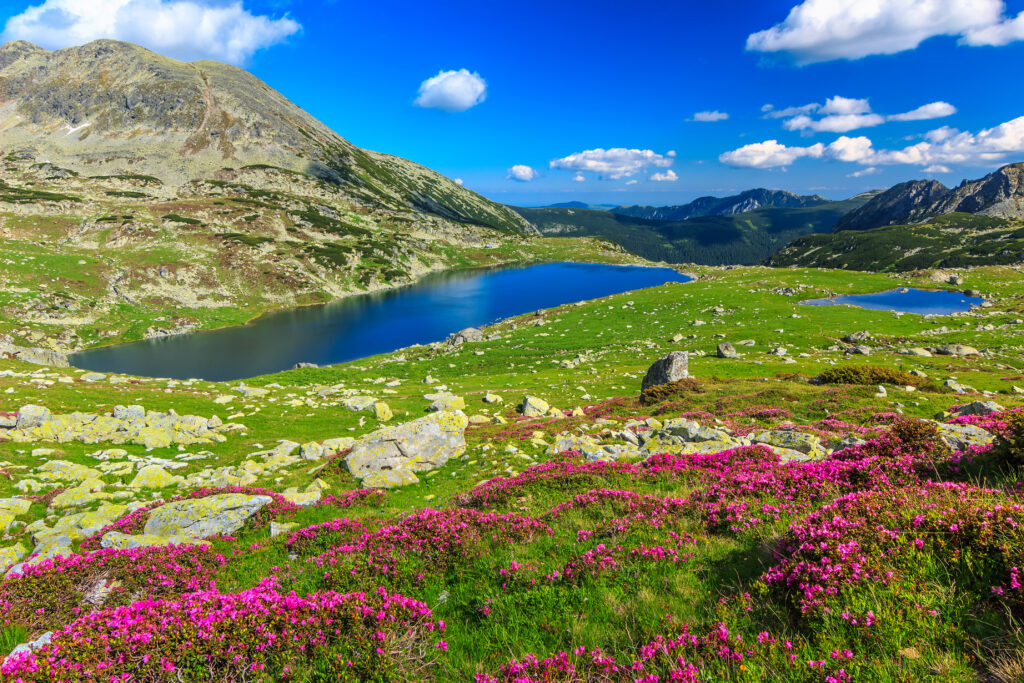
The Retezat Mountains benefit from a large network of hiking trails, so you’ll encounter fewer hikers and have a better chance of spotting wildlife. On the mountain trails here you will find yourself surrounded by clearly defined peaks, often reflected in the clear waters of the alpine lakes.
Important parts of the mountain range are protected: it was declared the first Romanian national park in 1935. The most important part of the massif consists mainly of crystalline rock and is called Retezatul Mare (Big); the southern part, with developed relief and more important limestone masses, is called Retezatul Mic (Small). These connect near Lake Bucura, the largest glacial lake in Romania.
Most of the hiking trails in Retezat start from Râu de Mori or Nucșoara (in the north) or from Câmpu lui Neag and Cheile Buții (in the south).
Thanks to the more than 80 lakes discovered throughout the national park, the Retezat massif is also known as the land of blue eyes. The photogenic glacial lakes of Retezat, whose waters reflect the rocky ridges, are connected by a well-marked network of hiking trails of medium and high difficulty.
Your adventure in the Retezat Mountains should include a hike to one of these lakes, even if it requires a little more effort and the right equipment.Both in the north and in the south, there are accessible hiking and cycling trails that lead to the mountain huts or go deeper into the heart of the Retezat without reaching high altitudes.
Alba Iulia
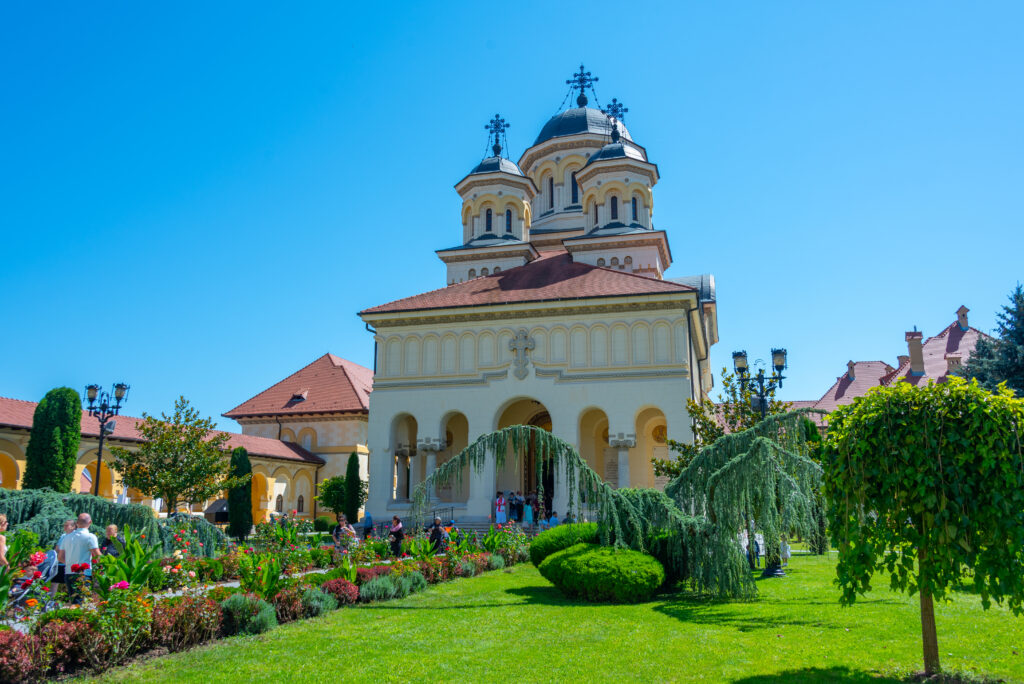
Alba Iulia in Romania is a city with a rich and varied history that stretches from ancient times to the present day. It is located in the west of the Transylvanian Basin, at the confluence of the Ampoi and Mureș rivers, and is the capital of Alba County. It has around 64,000 inhabitants and is an important cultural, economic and religious center of the region.
The city was first mentioned as Apulum in the 2nd century AD, when it was a Roman provincial capital and military camp. It was the place where Emperor Septimius Severus was proclaimed emperor and the scene of several battles between Romans and Dacians. In the Middle Ages, the city was known as Weißenburg and belonged to the Kingdom of Hungary. It was the residence of several Hungarian kings and princes who were crowned or buried here.
In the 18th century, the city was conquered by the Habsburgs and renamed Karlsburg after Emperor Charles VI, who had a mighty fortress built here in the Vauban style.
Today, the Alba Carolina Citadel is one of the largest and best-preserved fortresses in Europe and a national cultural heritage site.It includes several historic buildings, such as the Catholic Cathedral, the Orthodox Cathedral, the Palais Apor and the Batthyaneum, a famous library with valuable manuscripts.
In the 20th century, the city played a decisive role in Romanian history when it became the scene of the Grand National Assembly on December 1, 1918, which proclaimed the unification of Transylvania with Romania.This event is commemorated every year with a big celebration in the city.

